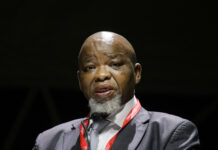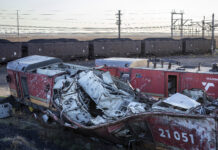The new mining cadastre, which is intended to replace Samrad (South African Mineral Resources Administration System), the existing online system for applying for mining and prospecting rights that was launched in 2011, was first promised for early in 2025. Then the date was moved out to end-June 2025, and then to the first half of July 2025, and then, in early July, it was moved out by another three months.
One of the reasons for the delay in rolling out the new cadastre may be the need to transfer data from the old system to the new one. Minister of Mineral Resources Gwede Mantashe explained to Parliament that it was “a delicate process that requires precision and quality assurance”.
According to the Department of Mineral and Petroleum Resources (DMPR), the intention is first to test it in the Western Cape because the province has active mines and fewer backlogs and appeals than some of the other provinces. The next province will be the Eastern Cape, and then the roll-out should occur over the rest of the country.
By early July, none of Samrad’s regular customers had seen the new system, other than a demonstration at the May Junior Indaba by DMPR deputy director-general Tseliso Maqubela, “which left a number of questions unanswered about how it would work”, said mining entrepreneur Errol Smart. “It didn’t seem to be as functional as some other systems or align with what is in the Mineral and Petroleum Resources Development Act (MPRDA) Amendment Bill.”
“The DMPR is keeping things close to their chest, as they did with the recent Mineral Resources Development Bill,” said Malan Scholes Attorneys partner Hulme Scholes. “The new cadastre has been years in the making and we have heard nothing.”
Opinions about the functionality of Samrad varied quite widely. Scholes said it was “originally not a bad system” though Patrick Leyden, partner at Herbert Smith Freehills Kramer, said it was “not particularly efficient or functional”. Smart described Samrad as “a shocker. It is like trying to race Formula One in an oxcart.
“It is old, and most of the time it is down because the hardware or software has failed. You can spend a lot of time uploading your documents to it but then you have to print them all out and take them to the DMPR offices anyway, where they continue the process on paper,” he said.
“It was originally quite well designed, but it does not work properly and it is easy to manipulate,” Scholes said. “We have had a number of instances when Samrad was offline, and Company A applied for, say, a prospecting right for coal and suddenly we found that Company B was ahead of Company A in applying for that right. There is no electronic record of who was first with their application, which undermines the principle of ‘first come, first served’.
“I believe this failure is actually engineered into the system. You can’t manipulate a system that works 100% and is transparent. We hope the new system will be completely transparent, like the Deeds Registry, where you can see exactly who owns what.”
One of the problems that has been raised over the years is the length of time it takes to receive mining and prospecting rights in South Africa, which has resulted in a backlog in applications. In January 2024, in response to a parliamentary question, Minister of Mineral Resources Gwede Mantashe said of the 2,525 applications received at the beginning of the 2023/24 financial year, not one had been finalised.
Scholes said the backlog had come down in the last couple of years. “It isn’t competitive with other countries, though. You cannot compare our process of granting licences to that in Botswana, or the systems in Australia and Canada. But it is far better than Zambia’s cadastre, where there is no transparency in how decisions are made and no ‘first come, first served’ principle.”

Minerals Council of SA chief economist Hugo Pienaar said that in the current system, many applications with little chance of success (because they don’t meet the requirements) were being filed. Still, the DMPR had to go through a lengthy process before it was able to reject them, and this was clogging up the system. Once the new cadastre was working, it should start to deal with that backlog.
While the council would like the new cadastre to provide a more integrated application process, where submissions would be automatically moved from one department to the next, it was not clear that this would happen, Pienaar said.
But in view of all the other deterrents to investment in mining and exploration in South Africa – crumbling logistical networks, intermittent, costly and carbon-intensive electricity supply by Eskom, and rigid legislation applied in an arbitrary fashion – will a more efficient cadastral system make any difference?
Leyden said SA obviously needed to create a more attractive regulatory environment, and recent proposed amendments to the MPRDA were intended to address some of the concerns. “Whether they do is arguable, but these are still in draft form.
“Linked to regulatory clarity and certainty is the need for efficient administration and faster processing times for licence applications. The new system is intended to provide more transparency and speed. Currently on Samrad you cannot see who holds rights where, which you can see on other jurisdictions’ cadastral systems. Another problem is that of overlapping rights being granted over the same area, which can result in costly litigation,” said Pienaar.
“The backlog in processing times is certainly a concern for international investors. They cannot wait more than two years for a mining right – elsewhere it can take six to eight months. Hopefully, greater efficiency and transparency when considering and granting applications for rights might help to attract foreign investment to SA.”
Leyden saw no cause for concern in the fact that the new cadastre is not mentioned in the MPRDA Amendment Bill. “The current regulations to the MPRDA include a template that needs to be completed to lodge a mining or prospecting right application on Samrad. The amendment bill does not mention the new cadastral system but it isn’t necessary to do so. A cadastral system is not a creature of statute, it is an administrative tool, and it can be addressed in the regulations to the Act.”
The DMPR did not respond to enquiries about the new cadastre.




